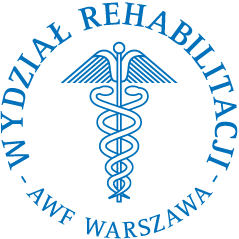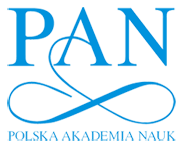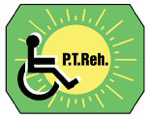


|
Current issue
Archive
Manuscripts accepted
About the journal
Editorial board
Reviewers
Abstracting and indexing
Contact
Instructions for authors
Publication charge
Ethical standards and procedures
Editorial System
Submit your Manuscript
|
4/2021
vol. 35 Assessment of lower limbs in people with Generalized Joint Hypermobility (GJH) - preliminary report
Paulina Ewertowska
1
,
Agnieszka Kleniewska
1
,
Jakub Wasilewski
1
,
Agata Wasilewska
1
,
Afrodyta Zielińska
1
,
Ireneusz Haponiuk
1
,
Dariusz Czaprowski
2, 3
Advances in Rehabilitation, 2021, 35(4), 25–32
Online publish date: 2021/08/23
Article file
- 2021-04-ar-04.pdf
[0.44 MB]
ENW EndNote
BIB JabRef, Mendeley
RIS Papers, Reference Manager, RefWorks, Zotero
AMA
APA
Chicago
Harvard
MLA
Vancouver
1. Juul-Kristensen B, Schmedling K, Rombaut L, Lund H, Engelbert RHH. Measurement properties of clinical assessment methods for classifying generalized joint hypermobility – A systematic review. Am J Med Genet, Part C: Seminars in Medical Genetics. 2017; 175(1): 116-47. 2.
Juul-Kristensen B, Kristensen JH, Frausing B, Jensen DV, Rogind H, Remvig L. Motor Competence and Physical Activity in 8-Year-Old School Children With Generalized Joint Hypermobility. Pediatrics. 2014; 124(5): 1380-7. 3.
Gocentas A, Jascaniniene N, Pasek M, Przybylski W, Matulyte E, Mieliauskaite D et al. Prevalence of gen-eralised joint hypermobility in school-aged children from east-central European region. Folia Morphol. 2016; 75(1): 48-52. 4.
Jindal P, Narayan A, Ganesan S, MacDermid JC. Muscle strength differences in healthy young adults with and without generalized joint hypermobility. BMC Sports Sci Med Rehabil. 2016; 8-12. 5.
Russek LN, Errico DM. Prevalence, injury rate and, symptom frequency in generalized joint laxity and joint hypermobility syndrome in a “healthy” college population. Clin Rheumatol. 2016; 35(4): 1029-39. 6.
Clinch J, Deere K, Sayers A, Palmer S, Riddoch Ch, Tobias JH et al. Epidemiology of generalized joint laxity (hypermobility) in fourteen-year-old children from the UK: a population-based evaluation. Arthritis Rheum. 2011; 63(9): 2819-27. 7.
Czaprowski D, Kotwicki T, Stoliński Ł. Assessment of Joint Laxity in Children and Adolescent – a Review of Methods. Ortop Traumatol Rehabil. 2012; 4(5): 407-20. 8.
Malfait F, Hakim AJ, De Papee A, Grahame R. The genetic of the joint hypermobility syndromes. Rheumatology. 2006; 45: 502-7. 9.
Czaprowski D, Kotwicki T, Pawłowska P, Stoliński Ł. Joint hypermobility in children with idiopathic scoliosis: SOSORT award 2011 winner. Scoliosis. 2011; 7: 6-22. 10.
Hanewinkel-van Kleef YB, Helders PJM, Takken T, Engelbert RH. Motor performance in children with generalized joint hypermobility: The influence of muscle strength and exercise capacity. Pediatr Phys Ther. 2009; 21(2): 194-200. 11.
Czaprowski D, Pawłowska P, Kolwicz-Gańko A, Sitarski D, Kędra A. The Influence of the “Straighten Your Back” Command on the Sagittal Spinal Curvatures in Children with Generalized Joint Hypermobility. Biomed Res Int. 2017; 9724021: 1-7. 12.
Czaprowski D, Sitarski D. Fizjoterapia w uogólnionej hipermobilności stawów. Praktyczna fizjoterapia i rehabilitacja. 2018; 76: 66-71. 13.
Keer R, Grahame R. Hypermobility Syndrome. Recognition and Management for Physiotherapists. Phys Ther Sport. 2004; 5(1): 51. 14.
Ewertowska P, Trzaskoma Z, Sitarski D, Gromuł B, Haponiuk I, Czaprowski D. Muscle strength, muscle power and body composition in college-aged young women and men with Generalized Joint Hypermobility. PONE. 2020; 15(7): 1-14. 15.
Meyer KJ, Chan C, Hopper L, Nicholson LL. Identifying lower limb specific and generalised joint hypermobility in adults: validation of the Lower Limb Assessment Score. BMC Musculoskelet Disord. 2017; 18,514: 1-9. 16.
Teixeira FB, Junior AR, Filho MC, Speciali DS, Kawamura CM, Lopes J et al. Correlation between physical examination and three-dimensional gait analysis in the assessment of rotational abnormalities in children with cerebral palsy. Einstein. 2018; 16(1): 1-7. 17.
Quanbeck AE, Russell JA, Handley SC, Quanbeck DS. Kinematic analysis of hip and knee rotation and other contributors to ballet turnout. J Sports Sci. 2017; 35(4): 331-8. 18.
Kotwicki T, Walczak A, Szulc A. Trunk rotation and hip joint range of rotation in adolescent girls with idiopathic scoliosis: does the „dinner plate” turn asymmetrically? Scoliosis. 2008; 3(1): 1-11. 19.
Jeon JH, Yoon JS, Lee KJ, Yu KP, Lee JH, Seog TY et al. A New Instrument for Measuring Tibial Torsion in Pediatric Patients. Ann Rehabil Med. 2017; 41(3): 441-9. 20.
Villamin CAC, Syguia JFC. Tibial Torsion Among Filipinos: A Cadaveric Study. Malays Orthop J. 2012; 6(3): 27-30. 21.
Pietrzyk D, Matuszewski Ł, Kałakucki J, Jakubowski P, Kandzierski G. Wpływ uogólnionej wiotkości wielostawowej u dzieci a leczenie zaburzeń osi kończyn dolnych małoinwazyjnymi metodami cza-sowego blokowania chrząstek wzrostowych. Chir Narzadow Ruchu Ortop Pol. 2016; 81(6): 212-8. 22.
Hertel J, Dorfman JH, Braham RA. Lower extremity malalignments and anterior cruciate ligament injury history. J Sports Sci Med. 2004; 3: 220-5. 23.
Gonzalez-Martin C, Pita-Fernandez S, Seoane-Pillado T, Lopez-Calvino B, Pertega-Diaz S, Gil-Guillen V. Variability between Clarke’s angle and Chippaux-Smirak index for the diagnosis of flat feet, Colomb Med (Cali). 2017; 48(1): 25-31. 24.
Gonzalez-Martin C, Pita-Fernandez S, Seoane-Pillado T, Lopez-Calvino B, Pertega-Diaz S, Gil-Guillen V. Validity of footprint analysis to determine flatfoot using clinical diagnosis as the gold standard in a random sample aged 40 years and older. J Epidemiol. 2015; 25(2): 148-54. 25.
Pauk J, Ihnatouski M, Najafi B. Assessing Plantar Pressure Distribution in Children with Flatfoot Arch Application of the Clarke Angle. J Am Podiatr Med Assoc. 2014; 104(6): 1-11. 26.
Pawłowska K, Pawłowski J, Mazurek T, Aschenbrenner P, Kołodziej Ł, Grochulska A. Feet deformities in patients with hip osteoarthritis. Med Res J. 2019; 4(2): 67-71. 27.
Szczepanowska-Wołowiec B, Sztandera P. The analysis of feet construction versus BMI in 8-year-old boys. J Educ, Health Sport. 2017; 7(9): 292-300. 28.
Engelbert RHH, Juul-Kristensen B, Pacey V, Wandele I, Smeenk S, Wojnarosky N et al. The Evidence-Based Rationale for Physical Therapy Treatment of Children, Adolescents, and Adults Diagnosed With Joint Hyper-mobility Syndrome/Hypermobile Ehlers Danlos Syndrome. Am J Med Genet C Semin Med Genet. 2017; 175(1): 158-67. 29.
Fieseler G, Laudner KG, Irlenbusch L, Meyer H, Schulze S, Delank KS et al. Inter – and intrarater reliability of goniometry and hand held dynamometry for patients with subacromial impingement syndrome. J Exerc Rehabil. 2017;13(6):704-710. 30.
Norris ES, Wright E, Sims S, Fuller S, Neelly K. The Reliability of Smartphone and Goniometric Measurements of Hip Range of Motion. JRSR. 2016; 4: 77-84. 31.
Gutiérrez-Vilahú L, Massó-Ortigosa N, Rey-Abella F, Costa-Tutusaus L, Guerra-Balic M. Reliability and Validity of the Footprint Assessment Method Using Photoshop CS5 Software in Young People with Down Syndrome. J Am Podiatr Med Assoc. 2016; 106(3): 207-13. 32.
Evans AM, Rome K, Peet L. The foot posture index, ankle lunge test, Beighton scale and the lower limb assessment score in healthy children: a reliability study. J Foot Ankle Res. 2012, 5: 1. 33.
Sass P, Hassan G. Lower extremity abnormalities in children. Am Fam Physician. 2003; 68(3): 461-8. 34.
Meyer KJ, Chan C, Hopper L, Leslie LN. Identifying lower limb specific and generalised joint hypermobility in adults: validation of the Lower Limb Assessment Score. BMC Musculoskelet Disord. 2017; 18(514): 1-9. 35.
Sankar WN, Laird CT, Baldwin KD. Hip range of motion in children: what is the norm? J Pediatr Orthop. 2012; 32(4): 399-405. 36.
Cannon A, Finn K, Yan Z. Comparison of hip internal and external rotation between intercollegiate distance runners and non-running college students. Int J Sports Phys Ther. 2018; 13(6): 956-62. 37.
Nikolajsen H, Larsen PK, Simonsen EB, Alkjær T, Falkerslev S, Kristensen JH et al. Gait pattern in 9-11-year-old children with generalized joint hypermobility compared with controls; a cross-sectional study. BMC Musculoskelet Disord. 2013; 14(341): 1-9. 38.
Engelbert RHH, Kooijmans FTC, Riet AMH, Feitsma TM, Uiterwaal CSPM, Helders PJM. The relationship between generalized joint hypermobility and motor development. Pediatr Phys Ther. 2005; 17(4): 258-63. 39.
Talley W, Goodmote P, Henry SL. Managing Intoeing in Children. Am Fam Physician. 2011; 84(8): 937-44. 40.
Karol LA. Rotational deformities in the lower extremities. Curr Opin Pediatr. 1997; 9(1): 77-80. 41.
Erkocak OF, Altan E, Altintas M, Turkmen F, Aydin BK, Bayar A. Lower extremity structural factors, such as increased femoral anteversion and lateral tibial torsion, may contribute to patellofemoral malalignment and anterior knee pain. Knee Surg Sports Traumatol Arthrosc. 2016; 24(9): 3011-20. 42.
Grossman G, Waninger KN, Voloshin A, Reinus WR, Ross R, Stoltzfus J et al. Reliability and validity of go-niometric turnout measurements compared with MRI and retro-reflective markers. Dance Med Sci. 2008; 12(4): 142-52. 43.
Greene CC, Edwards TB, Wade MR, Carson EW. Reliability of the quadriceps angle measurement. Am J Knee Surg. 2001; 14(2): 97-103. 44.
Keays SL, Newcombe P, Keays AC. Generalized joint hypermobility in siblings with anterior cruciate ligament injuries and matched unrelated healthy siblings. Physiother Res Int. 2020; 25(9): e1826. 45.
Evans AM, Rome K, Peet L. The foot posture index, ankle lunge test, Beighton scale and the lower limb assessment score in healthy children: a reliability study. J Foot Ankle Res. 2012; 5: 1-5. 46.
Cimolin V, Galli M, Celletti C, Pau M, Castori M, Morico G et al. The effects of neuromuscular taping on gait walking strategy in a patient with joint hypermobility syndrome/Ehlers–Danlos syndrome hyper-mobility type. J Am Podiatr Med Assoc. 2014; 104(6): 588-93.
This is an Open Access journal, all articles are distributed under the terms of the Creative Commons Attribution-NonCommercial-ShareAlike 4.0 International (CC BY-NC-SA 4.0). License (http://creativecommons.org/licenses/by-nc-sa/4.0/), allowing third parties to copy and redistribute the material in any medium or format and to remix, transform, and build upon the material, provided the original work is properly cited and states its license.
|
    |